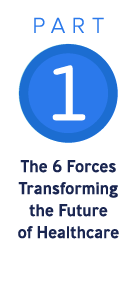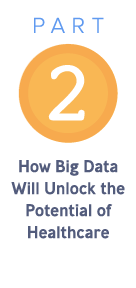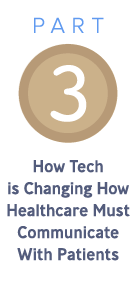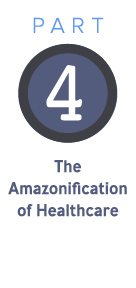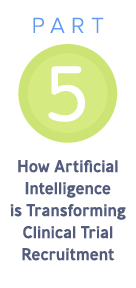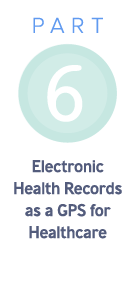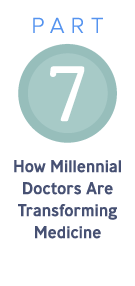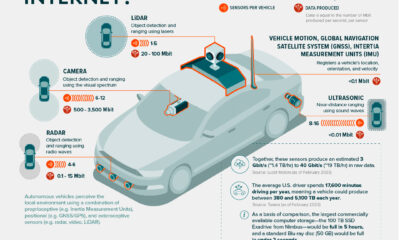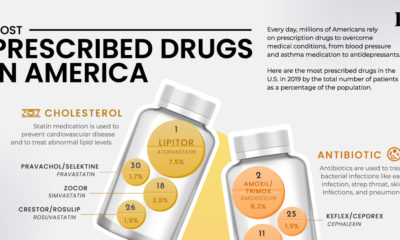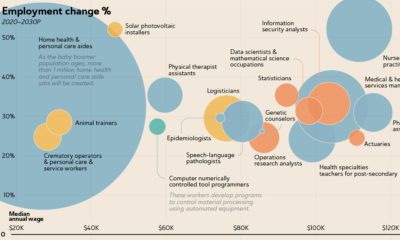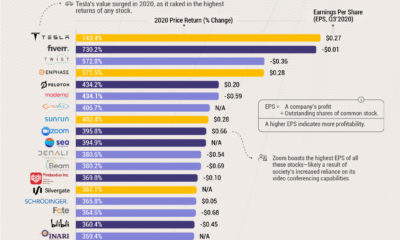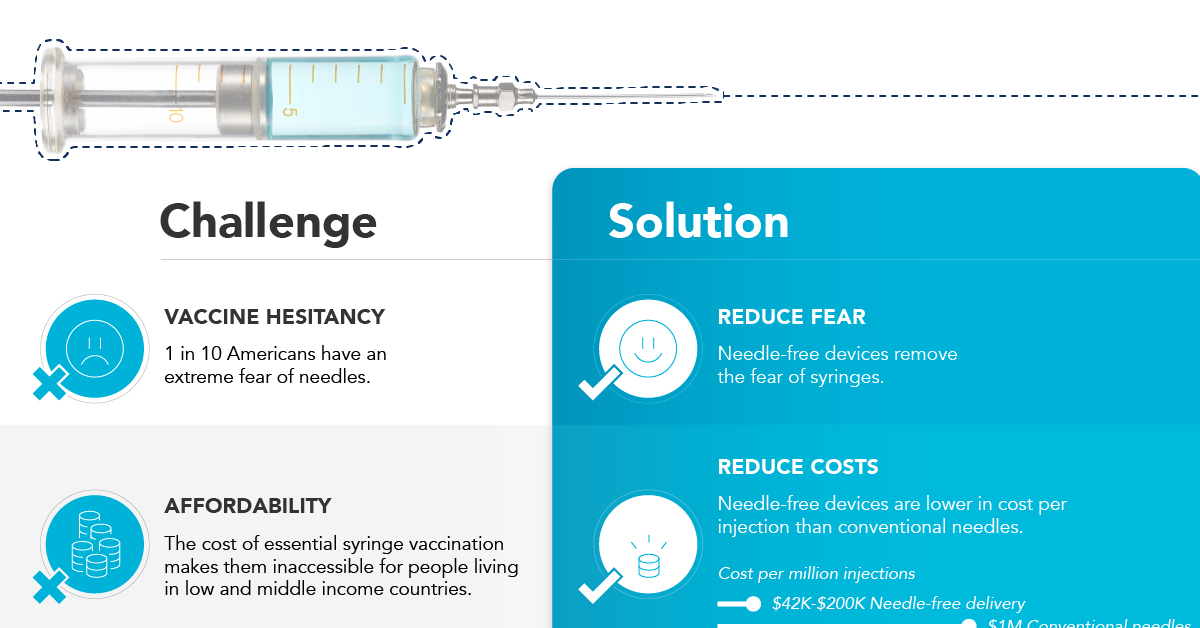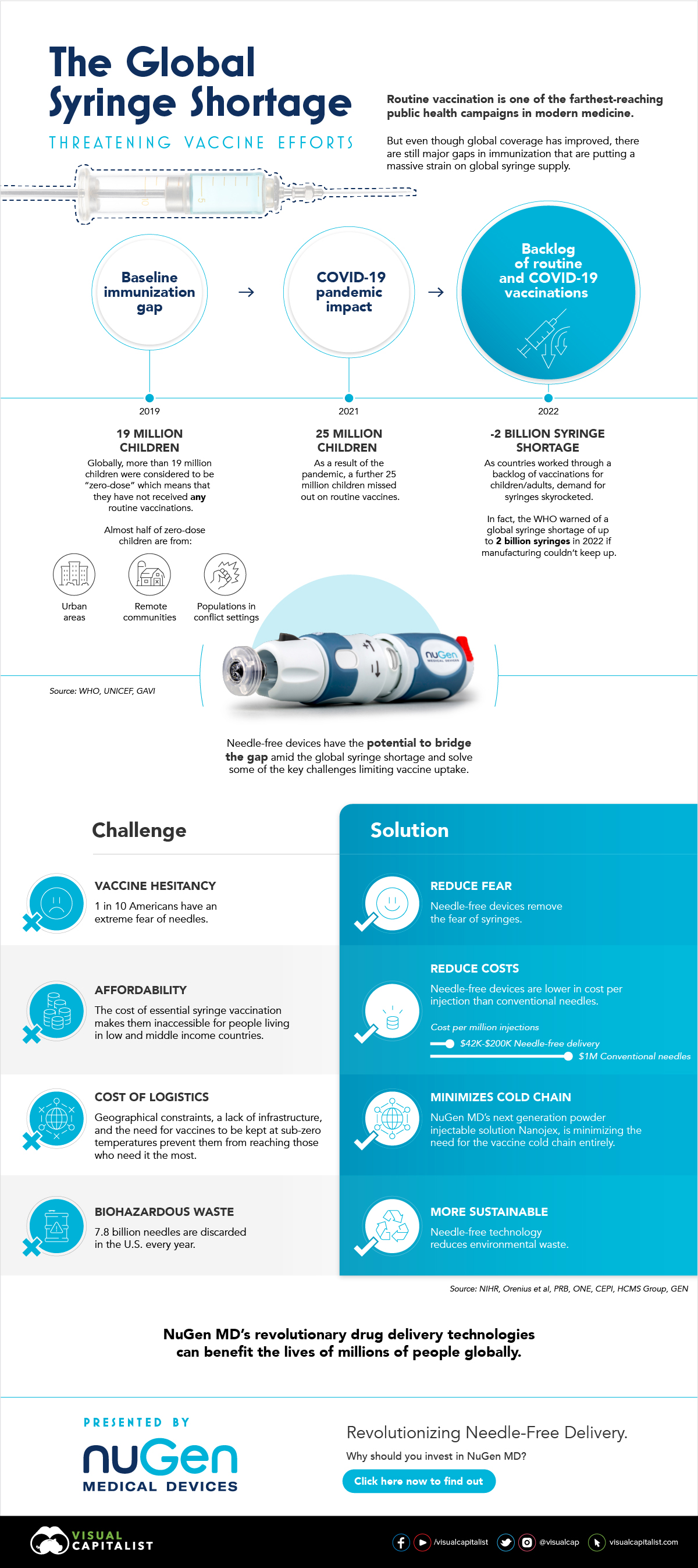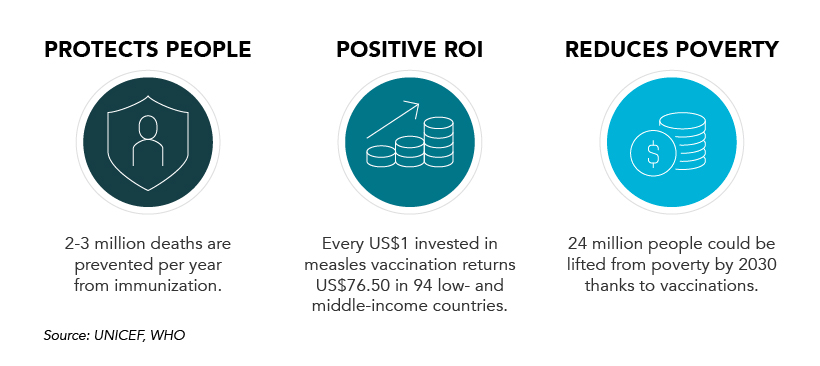This is a reality in almost every sector, but it’s especially relevant to companies in the healthcare industry. That’s because the amount of health data being created is growing at a 48% rate annually, and by 2020, a Stanford University study estimates that 2,314 exabytes of healthcare data will be produced per year. Simply put, the companies that can extract meaningful insights from these mountains of data will have a serious and durable competitive advantage – and those that don’t have a proper strategy for this boom in data will get lost in the weeds.
Breaking Down Big Data
Today’s infographic comes to us from Publicis Health, and it shows why big data is one of the six forces transforming the life sciences and pharmaceuticals industries. Big data in healthcare spans four different dimensions: Volume The sheer amount of data created can be processed and interpreted by AI. Veracity Noise, abnormality, and biases can undermine trust and accuracy of data. Data assurance can help guarantee analytics are credible and error-free. Velocity Healthcare is time sensitive, and being able to process large amounts of data in real-time is crucial. Variety Big data comes from a myriad of sources, such as social media or IoT devices. Actionable insights can be gained from analyzing different data sources together. Healthcare businesses must learn to quickly distill information from masses of data and to transform them into actionable insights. The ability to extract these insights will power the future of health, and become a differentiator for companies to thrive and stay ahead of emerging competitors.
Analytical Nirvana
How can companies reach “analytical nirvana”, a state where analytics can be used for strategic differentiation? Companies must move towards being more service-focused, by transforming data into compelling stories that bridge the gap between customer engagement and action. Further, this change must be powered by predictive health intelligence that can interpret data to create more personalized experiences for customers. Finally, data must be democratized throughout an organization, so that even non-analysts can deploy gained insights to achieve these other goals. This journey may seem like a daunting task, but companies that successfully navigate this transformation will gain an edge that will continue to grow in importance in the digital era. This is part two of a seven part series. Stay tuned by subscribing to Visual Capitalist for free, as we go into these six forces in more detail in the future. on In the above infographic from NuGen Medical Devices, we explore the factors leading to the syringe shortage and take a look at the company’s innovative needle-free solution that could play an important role in closing the immunization gap.
The Immunization Gap
Even before the COVID-19 pandemic, millions of people around the world struggled to get access to routine vaccinations. In fact, as of 2019 more than 19 million children around the world were considered to be “zero-dose” which means that they did not receive any routine vaccinations. Moreover, when the COVID-19 pandemic hit, global immunization dropped even further with 25 million children missing out on routine vaccines in 2021 alone.
Why is Immunization So Important?
Vaccinations prevent against over 20 life-threatening diseases and save between 2-3 million deaths per year, making them—as the WHO describes—the foundation of healthcare systems and an indisputable human right. As countries work through a backlog of vaccinations to close the immunization gap that has worsened since the pandemic, demand for syringes has significantly increased.
The Result: A Global Syringe Deficit
In 2022, the WHO warned that we could see a shortage of up to 2 billion syringes if manufacturing can’t keep up. This could result in the severe disruption to routine vaccinations and promote unsafe recycling of syringes in order to administer vaccines. But the issue goes far beyond a supply shortage of syringes. COVID-19 has brought conventional syringe vaccines into sharp focus, with many criticizing the challenges associated with them. With conventional needles facing so many challenges, it’s no surprise that investors are taking interest in viable alternatives. What’s more, these alternatives don’t just apply to vaccinations, they can also work for people with diabetes, dentists, and pet care.
Enter Needle-free Devices from NuGen MD
Needle-free devices have the potential to bridge the gap in immunization amid the global syringe shortage, solve some of the key challenges limiting vaccine uptake, and more importantly, benefit the lives of millions of people.
How Do They Work?
NuGen’s needle-free devices use a simple spring-loaded mechanism which uses pressure to release the liquid drug and penetrate the skin. In less than one-tenth of a second, the drug is dispensed more safely and evenly compared to needle syringes. It’s also virtually painless and leaves no mark on the skin.
Interested in investing in NuGen Medical Devices? To learn more about their plans to pioneer the future of needle-free drug delivery, click this link now.
